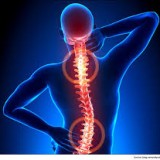$90,000 damages for chronic neck and back pain.
On March 30, 2016, the BC Supreme Court assessed damages for chronic soft tissue injuries suffered in two motor vehicle accidents (“MVAs”).
In Niijar v. Hill the plaintiff was involved in two MVAs, the first in 2010 the second in 2012. The defendants admitted liability for both accidents. As a result of one or both of the accidents, the plaintiff suffered from chronic neck and back soft tissue injuries which continued to the time of trial and were expected to continue into the future. The Court assessed non-pecuniary damages at $90,000, but reduced this amount by 15% on the basis that the plaintiff failed to mitigate her damages by following some of her doctors’ advice. In making this assessment Madam Justice Baker gave the following reasons:
[147] I conclude that Ms. Nijjar suffered soft tissue injuries to the muscles of her neck and back in both the first and the second accident. The injuries caused by the second accident were more significant and Ms. Nijjar experienced more intensive pain and discomfort of longer duration following the second accident. She also had pain on the left side of her face, jaw and some left arm pain caused by the inflation of the air bag on her left side and also reported some hip pain. These complaints resolved within a short time. Her most significant ongoing symptoms were pain in her neck and upper back; and in her lower back.
[148] I conclude that Ms. Nijjar made a good recovery following the first accident, although she continued to experience mild symptoms of discomfort, aggravated by certain activities, up to the time of the second accident. She did not miss work as a security guard after the first accident. She did take time off from a job with Sears for a period of about two months and did not do any janitorial work for a period of about three months. She was sufficiently recovered to travel to India three months after the accident and remained there for about two months. On her return from India she resumed working as a security guard and doing janitorial work. She attempted to return to the Sears job but was not re-hired.
[149] Ms. Nijjar had more severe symptoms following the second accident and continued to be symptomatic at time of trial. Dr. Hershler opined that she suffered soft tissue injuries involving both muscles and ligaments; and a right-sided small cervical disc protrusion caused by the accident that may be contributing to her symptoms; although this remains a matter of uncertainty. Ms. Nijjar also continues to experience periodic headache which Dr. Hershler believes is cervicogenic.
[150] The symptoms Ms. Nijjar experienced were not severe enough to cause her to seek relief from prescription medications for more than a couple of months following the May 23, 2012 accident and at times she has not required the use of even non-prescription medication to manage her symptoms.
[151] I accept that Ms. Nijjar continued to experience neck and lower back pain at time of trial. Although I have concluded that she exaggerated the severity of her symptoms when testifying at trial, I accept that she continues to have symptoms from time to time. I accept that she will continue to experience symptoms in future, although I accept Dr. Arthur’s opinion that there will be further improvement with the passage of time; and that the symptoms will also lessen if Ms. Nijjar engages in a regular exercise program designed to improve her back and core body strength. I conclude that the symptoms in future will generally be mild and episodic and that Ms. Nijjar will be able to alleviate most or all of the symptoms with use of non-prescription analgesic medications…
[194] Having considered all of the evidence and the range of damages suggested by these authorities, I conclude that an award of $90,000, before deduction for a failure to mitigate, is warranted. I reduce that award by 15% for the failure to mitigate, and award the sum of $76,500.




